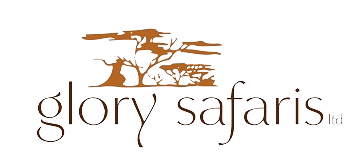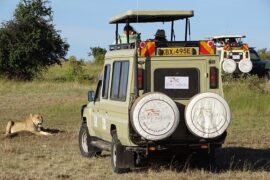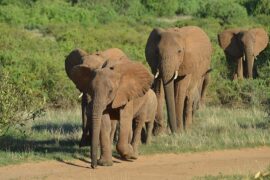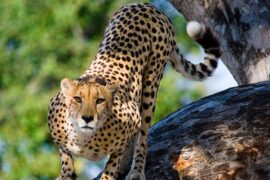Samburu National Reserve
Samburu National Reserve is situated within the Rift Valley Province of Kenya.
Measuring approximately 104sq.kms (approx. 65sq. miles) in size, this unfenced savannah grassland is roughly 350km (217 miles) from Nairobi.
It is relatively small in size compared to other Kenyan parks, such as Tsavo or Masai Mara.
The reserve is rich in wildlife with an abundance of rare northern specialist species such as the Grevy’s zebra, Somali ostrich, reticulated giraffe, gerenuk and the beisa oryx (also referred to as Samburu Special Five).
Access
By Road: Use your own vehicle, take public transportation, or book an open-topped minibus or safari van tour with a tour guide. The park is located about 345km (approx. 214 miles) from Nairobi, or about a five-hour drive. The roads and tracks to the park are all weather. The reserve is accessible by road via Isiolo and Archer’s Post.
By Air: The game reserve is accessible by air and there are daily flights from Nairobi to Samburu that you can book online. Travel time is about 45 minutes and the flights land at the park’s airstrip. Private charter flights are also allowed to use the airstrip.
Climate
Arid and semi-arid with hot days and cool nights. Annual mean temperature between 18º C and 30ºC.
Annual mean rainfall is 345 mm with peaks in November and April.
What to See & Do
Game Viewing: In the southern part of the park, you are guaranteed to see most of the Kenyan animals found in Samburu, namely: cheetahs, lions, leopards, impalas, buffalo, hippos, and dik-diks, as well as the native gerenuk, Grevy’s zebra, reticulated giraffe and Beisa Oryx.
You are guaranteed to see most animals during the dry season as they converge at the Usaso Nyiro River, their main source of water during the long dry weather. Elephants are also spotted during this time, and you can watch the Nile crocodiles swim in the river.
Bird Viewing: Samburu National Reserve is a paradise for bird lovers, with over 350 species of birds already recorded. You can enjoy a colorful assortment of birds such as vultures, kingfishers, marabous, bateleurs, guinea fowl, Somali ostriches and many more.
Samburu Cultural Tours: Visit the local Samburu villages where you get a chance to interact with the colorful Samburu people in their traditional setting and experience their culture. This is a good opportunity to purchase traditional Samburu souvenirs, art and collectibles.
Best Time to Visit
The months of December through March and July through October are dry, making them by far the best months to visit the Samburu National Reserve. April through June are also good months but might be rainy.
Endangered Species
The Lesser Kestrel and the Taita Falcon are species of global conservation concern and they both utilise the reserve. Five species categorized as vulnerable have also been recorded in the reserve.
These are the African darter, great egret, white-headed vulture, martial eagle and the yellowbilled ox-pecker.
The critically endangered pancake tortoise (malacochersus tornieri) is also found in the reserve.




